As we noted at the start, the amplifier could be installed in the frunk, dashboard, under the rear seat, or in the trunk. We think the dash is the optimal location if it fits. The next best is the frunk in the “microwave” area if you have a pre-refresh RWD. The dash installation has the benefit of being a conditioned space, which is always better for electronics. It also requires less wiring between the frunk and the dash. Lastly, it allows easy tuning adjustments while seated in the driver’s seat. If you have the Ultra High Fidelity sound or a physically large amplifier, you’ll likely have to mount the amp in the frunk.
We used the dash installation, described below, which is only possible with a small amplifier AND the car only has the basic sound system. Some of these steps will still apply to other installations to get access to the car’s line-level or speaker outputs.
- Remove the padded panel under the steering wheel. First, remove the T-20 Torx screw at the bottom of this panel. Next, I found it is easier to first grasp the bottom of the far driver’s side and pull to release the snaps on that side. Then on the other side near the main display, pull out at the bottom towards the back of the car. These snaps are tough to release and you’ll need quite a bit of force – to the point you expect to break something. I’ve not found any tools that make this easier.
- With this panel off, you’ll see a large rectangular hole between the steering wheel and the side of the car. In the hole, you may see a connector with a bright pink lever. For newer cars with basic audio, this connector is missing, so we’ll show alternatives later on. Many of the wires we’d like to use are on this connector wire bundle IF the connector is present. If you have Ultra High Fidelity sound, this is plugged into the secondary amplifier box, and you can’t install the amp here – you’ll have to mount the amp elsewhere. For basic sound when the connector is present, cut the black tie wrap to release the connector.
- To prepare to mount the amp, there are several choices that require no drilling of holes in the car:
- Choice A: I made an “L” bracket to mount on the two screws that are visible from the rectangular hole. These T-25 Torx screws hold in the AM/FM/HD tuner module, but it is also held in place with two additional screws from the backside, so it’s fine to temporally remove these screws. The amplifier mounts on the bracket so that the controls will face outwards towards the driver. This makes it easy to adjust while sitting in the driver’s seat (another big advantage of this installation method). I used a leftover aluminum box I had laying around, as I didn’t have any tools to make a 90-degree bend. I cut the box down to make the “L” bracket so that the longer portion holds the amp and is sized slightly under the size of the amp (about 5-3/16” x 4”). The smaller portion is about 4” high by 2” wide. Drill 13/64” mounting holes on the smaller tab, 1-¼” from the bend, and from the top, one hole 1-3/8” and one hole 4-5/16”. Next drill four small holes to mount the amplifier. I positioned it so that when mounted it is as far away from the front as possible. After a test fitting, I concluded the aluminum I used (.066” thick) was a bit flimsy and added a steel L bracket to add a bit of strength. Choosing a thicker aluminum to start would have been a better choice!
- Choice B: The amp includes a Velcro pad, so it could be attached to a flat surface. I didn’t think of this until I completed Choice A, but this may be an easier method to mount the amp. I didn’t see a suitable flat surface, but you could make a flat plate that mounts where the Ultra High Fidelity amp mounts against the side of the tuner module. There are four M6-1.0 metric screw-threaded holes that can be used. It’s not the largest area to work in, but should be doable. Make sure you use a liquid thread locker on each bolt. The Velcro can be attached to the plate and the bottom of the amp. As the dash can get very hot while the car is parked in the sun, I worry if the adhesive will hold the weight. If you use this method, I suggest adding one or two long tie wraps around the amp to secure it in place. The screw length should be about 10 mm or less. We’ll also use one of these holes for the ground connection later on.
- Access to audio outputs – Right/Left or Subwoofer:
- Basic Choice A: For cars with the basic audio AND older cars that include the Tesla audio connector, you can buy a mating connector from Arrow so you don’t need to open up the wire bundle. If necessary in the future, it provides the ability to remove the wiring without any effect on the car. This is more complex than just attaching the wires to the bundle as outlined in Option B below. With the matting connector, Pin 1 is the switched 12 V circuit, where I soldered an 18” length of stranded wire (This wire is n the NVX kit, but I didn’t realize this and used a red wire I already had). Pin 1 is the wide blade at the edge of the connector.
Pin 15 is the plus lead of the Right channel and Pin 3 goes to the shield. Pin 16 is the plus lead of the Left channel and Pin 4 goes to the shield. I suggest using a standard RCA stereo cable and cutting it down to about 12” length. Lastly, I made a cover to prevent any of the connector’s contacts from shorting or touching anything else. I made the cover using some ¾” acrylic square tubing, where I cut off one side to form a “U”. I drilled a couple of holes and used small tie wraps to lock it into place and also act as a strain relief for the wires. - Basic Choice B: For cars with the basic audio AND older cars that include the Tesla audio connector, unwrap the wire bundle and tap into the desired wires. You’ll need to access five wires for left/right, and switched power. Since I didn’t do this, I can’t tell you the color codes for sure, but I think line-level outputs are on the two pairs of wires that are twisted as white/white-black and green/green-black. Connect the switched 12V power to an 18” wire. Connect the line level left/right to shielded cables that end with standard RCA male connectors. One owner found the switched power was available behind the driver’s side left kick panel. It was on a yellow wire in the lower wire bundle, near the carpet.
- Basic Choice C: For cars with the basic audio AND do not have the Tesla audio connector (typically on newer cars), we’ll need to tap into the speaker outputs and a switched 12V lead. Remove the driver’s side sill by prying up from the back first and it should snap out. For the left side front speaker, there is a gray connector with a set of white and purple wires. The white/white-black pair goes to the front left door speaker. You’ll need to tap into these wires and connect them to the Left speaker input on the amp. In addition, tap the yellow-purple wire for 12-volt switched power.
On the right side, remove the sill cover. Tap into the gray connector’s blue/blue-black wires. Run a set of wires through the dash pipe to the driver’s side where you can connect it to the amp’s right side speaker inputs.
- Ultra Choice D: Cars equipped with the Ultra High Fidelity sound have a low-level sub-woofer that does not exist in the basic system. To access this, locate the pink and pink/black pair in the Tesla audio connector bundle. (Ultra information was provided by another installer – we did not perform or confirm this installation). Another owner doing this installation found on his 2014 S, that the amp out was on a blue/black pair of wires.
- Basic Choice A: For cars with the basic audio AND older cars that include the Tesla audio connector, you can buy a mating connector from Arrow so you don’t need to open up the wire bundle. If necessary in the future, it provides the ability to remove the wiring without any effect on the car. This is more complex than just attaching the wires to the bundle as outlined in Option B below. With the matting connector, Pin 1 is the switched 12 V circuit, where I soldered an 18” length of stranded wire (This wire is n the NVX kit, but I didn’t realize this and used a red wire I already had). Pin 1 is the wide blade at the edge of the connector.
- Balanced vs. Unbalanced – The low-level inputs from the Tesla audio connector (choice a, b, or d above) for the right/left or sub-woofer line outputs we need are “balanced” meaning neither side is grounded. This is an excellent way to reduce noise and avoid the need for a shielded cable. Most amplifier line inputs are unbalanced, meaning one side of the connection is grounded. We recommend the first option for basic sound or choose the “a” or “d” option below if you have Ultra sound.
- Option for all systems – Covert the signal – Here we used a device that converts the balanced signal to unbalanced. The best devices include electronics to do this conversion. There are low-cost unpowered products available, but these typically have a rapid fall-off in the lower end of the frequency response, blocking the audio needed for a sub-woofer.
- Basic sound – Use only one channel – While not ideal, it is cheap and might work. Most low frequencies are often distributed to both channels, but not always.
- Basic sound – Use both channels and just ground one side of the signal on each channel. We tried this, and while the sub-woofer works, you’ll get an odd click from the Tesla speakers when the system turns on and off (even if you disconnect the amp entirely). The click is not too loud and does not vary with volume, but I found it annoying and not worthy of a quality audio system design. Not recommended.
- Remote Level Control Option – The amp we choose has a built-in level adjustment, but no remote level. If your amp has a remote level control or you don’t want a level control, skip this step. The signal converter we recommend includes remote volume control. The signal converter includes jacks where you insert it between the Tesla line outputs and the amp. You’ll need a short stereo RCA male-to-male cable to connect the level control output to the amp. Ideally, you shouldn’t really need a remote adjustment, as once the correct setting is made, you really shouldn’t need further adjustment. It is useful to make minor tweaks depending on the music source and to demonstrate the sub-woofer improvement over the stock system. Once the amp is wired up (in later steps) attach the ground, power, and switched power from the converter to the amp itself. If you’re connecting to the speakers (choice 4c) there are a few devices available that provide remote volume control and may also convert the output to a line level. One option is the PAC LC-2 Line Output Converter with Remote Volume Control.
- Connect up the ground wire. While there is a grounding bolt behind the driver’s side sill near the front of the car, in my car there were three wires already attached to it and in a position where I couldn’t loosen the bolt. I was also very concerned about even temporally disconnecting grounds, as it’s possible to damage electronics with a floating ground (although I have no idea what is connected to those grounds). I chose instead to put an M6-1.0 x 10mm bolt into an existing threaded hole to the side of the Tuner module bracket. I added a washer, an internal tooth washer, the crimped ring from the ground wire (from the NVX kit), and another internal tooth washer. I also put a dab of liquid thread locker on the threads before inserting it. There is enough room to use a small socket wrench or adjustable wrench to tighten this bolt. Position the ground lug and wire so it will not interfere with the amp installation by pointing it to the front of the car, NOT as shown pointing downward.
- Feed the wires out through the front rectangular hole, and trim the length if needed (I allowed enough wire for the amp to lie on the floor for testing). Make all the connections to the amp – ground, always-on power, switched power, sub-woofer leads, and the RCA left/right connections. Optional: I used these RCA Speaker Wire Mini-Pins for the ground and main power, as the pin accepts an 8 gauge wire and makes it easier to connect to the amp.
- For choice 4a, before attaching our connector to the Tesla audio connector, shift the pink lever to the position furthest away from the wires. There is a small black latch that needs to be released to change the level position. Mate the two connectors up and shift the lever to the opposite side. It will pull the two connectors together. For now, we’ll leave the connector hanging for testing.
- Now we return to the frunk to make the last power connection. This again depends on the amp you choose. The small amp we are using only requires a 30 amp fused connection, so this makes the task far easier by using the fuse box. If you have a higher power amp, you’ll need to connect directly to the battery. Since it’s likely the bigger amp is being installed in the frunk, you’ll have already removed the frunk liner and hopefully have access to the battery (unconfirmed, as we didn’t need to do this).
- For a 30 amp connection, feed the power wire over to the black center fuse box. While leaving a bit of slack, I used a tie wrap around the large aluminum pipe strut to keep the wire in place. From this point, I left about 15” of wire and cut off the excess. Connect the wire to the add-fuse connector.
- Open the center fuse box. Insert a 30 amp fuse in the upper position of the add-a-fuse. Remove the 5 amp fuse in position F38 and put this in the lower add-a-fuse slot. F38 powers the Driver’s seat memory. A few early cars did not have memory seats, so the slot may be vacant, in which case, no fuse is needed in the lower add-a-fuse slot. I also confirmed that temporarily removing the fuse will not cause the loss of your seat’s memory position.
- I made a small 1/8” wide slot in the fuse box cover so the wire exiting the fuse box is not crushed by the cover. Reattach the fuse cover.
- The frunk can be put back together. Don’t forget to re-attach the three plastic fasteners in the FPA (Front Plastic Assembly) before putting back the top and side panels. Finally, screw the rubber bumper back in on the side panel.
Continued in Part 4: Testing and Adjustments…
or return to Part 2: Running Wires Through the Firewall
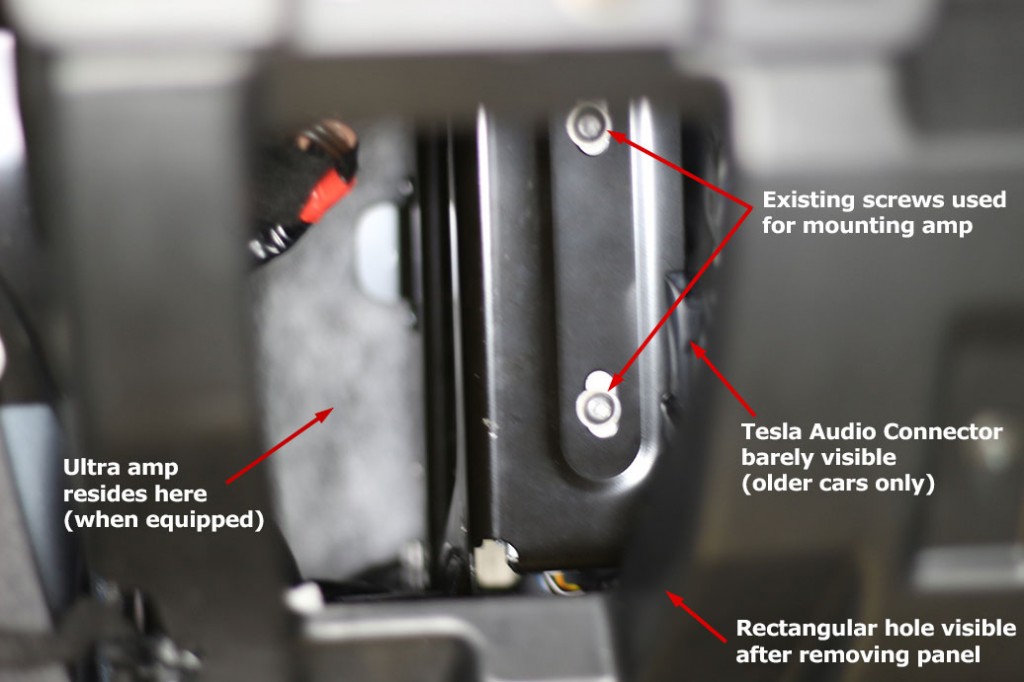
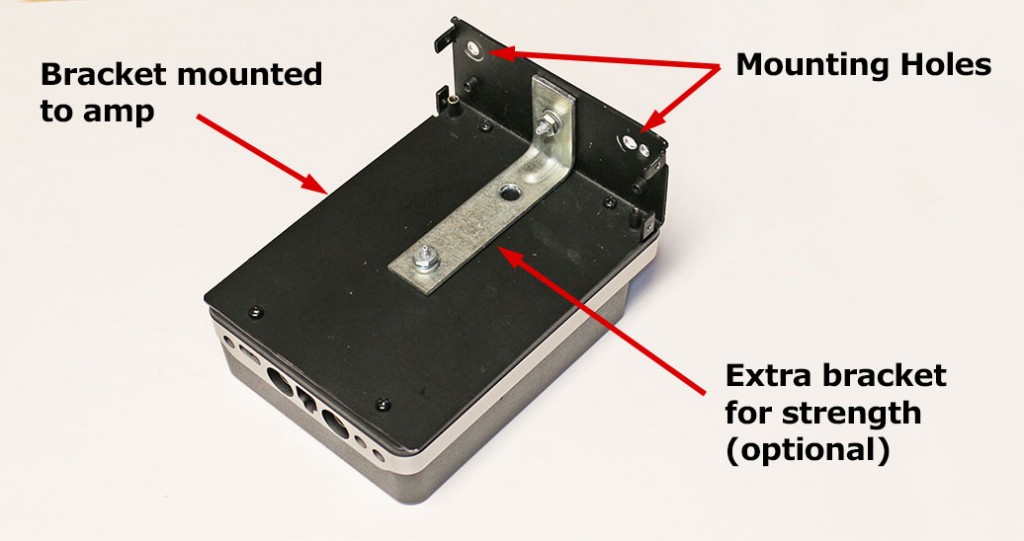
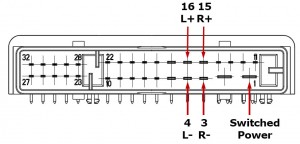

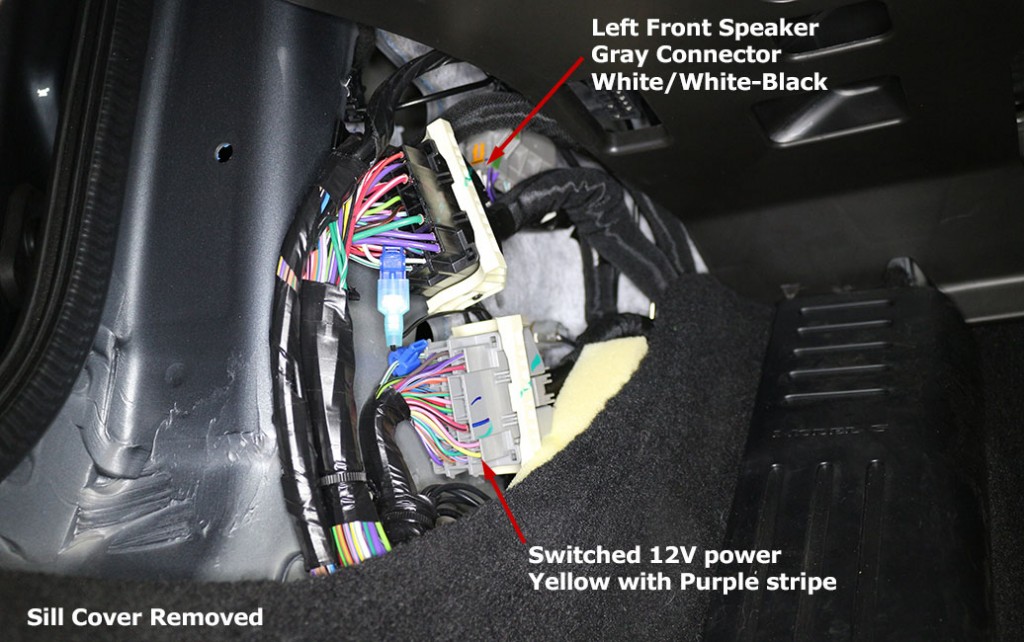
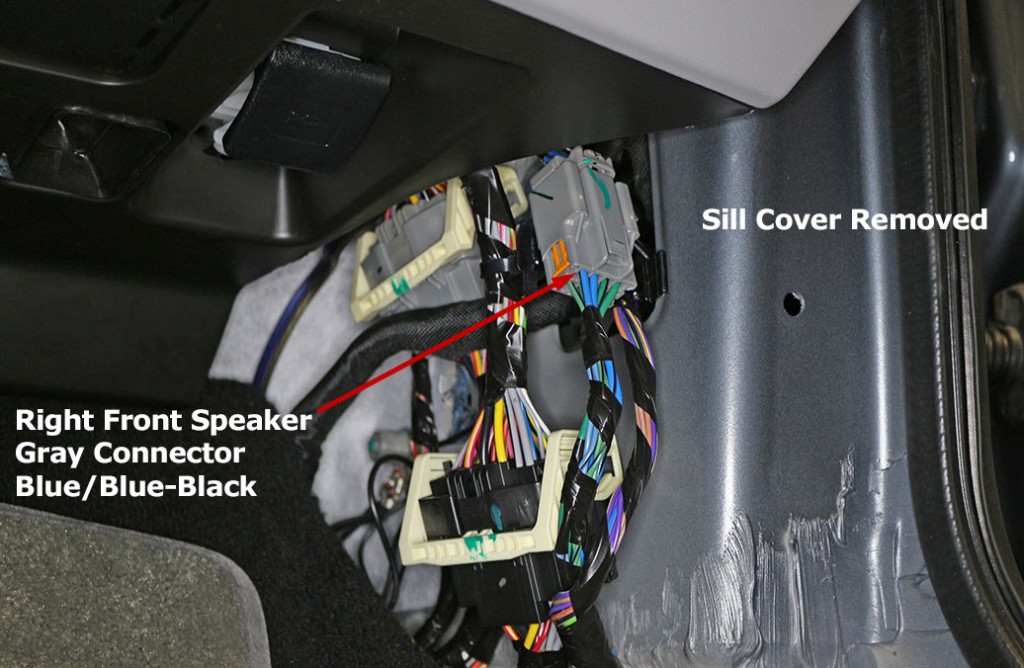
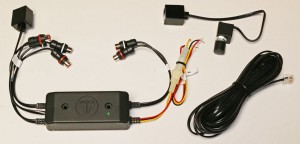
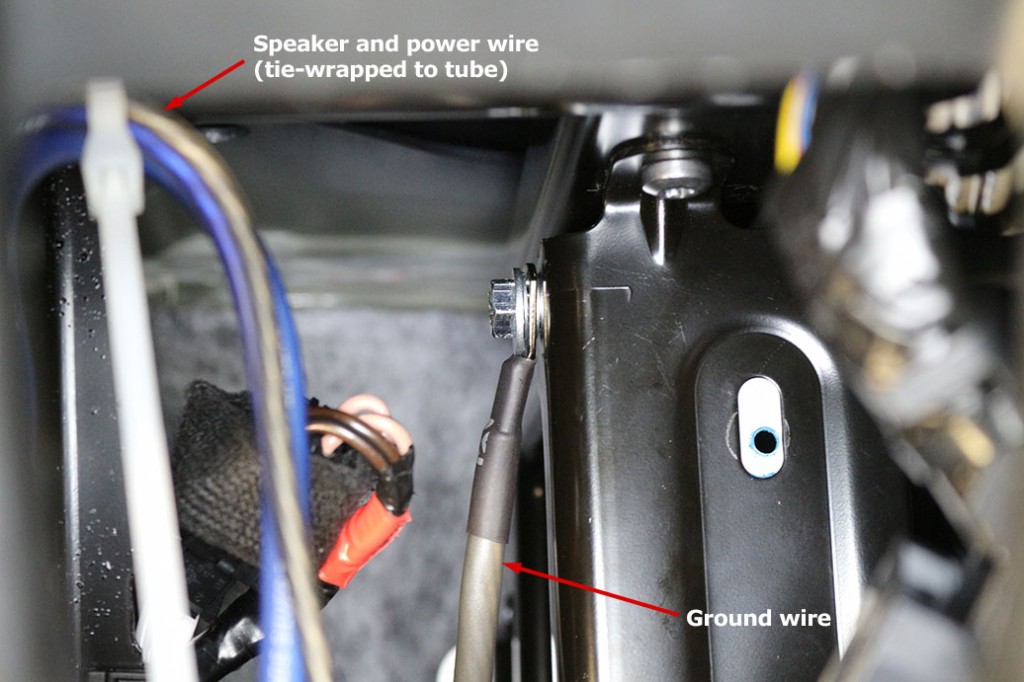
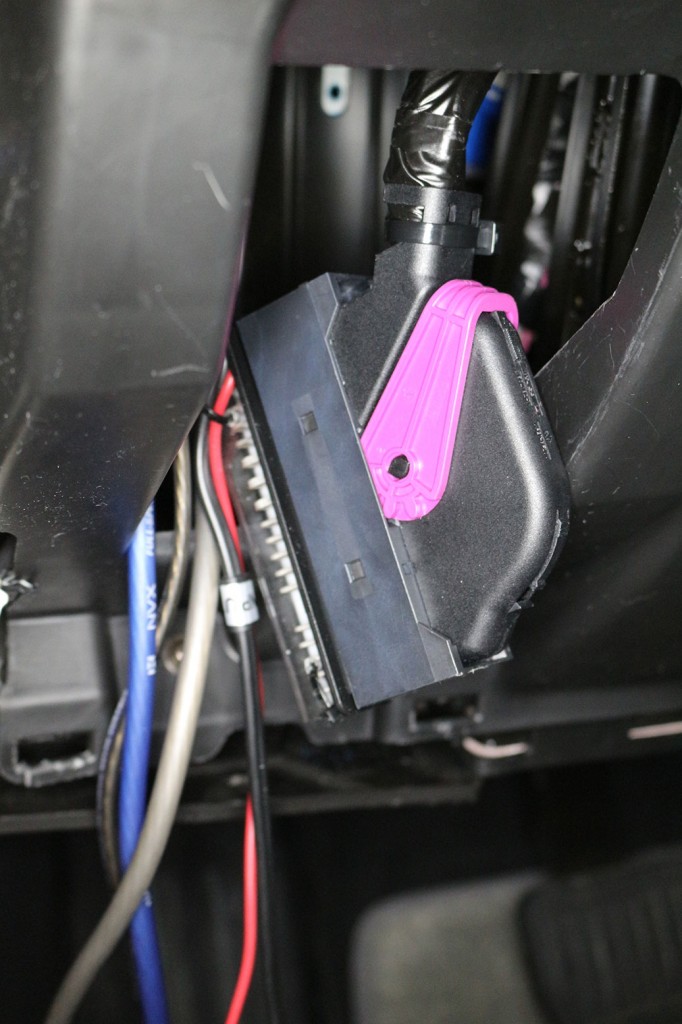
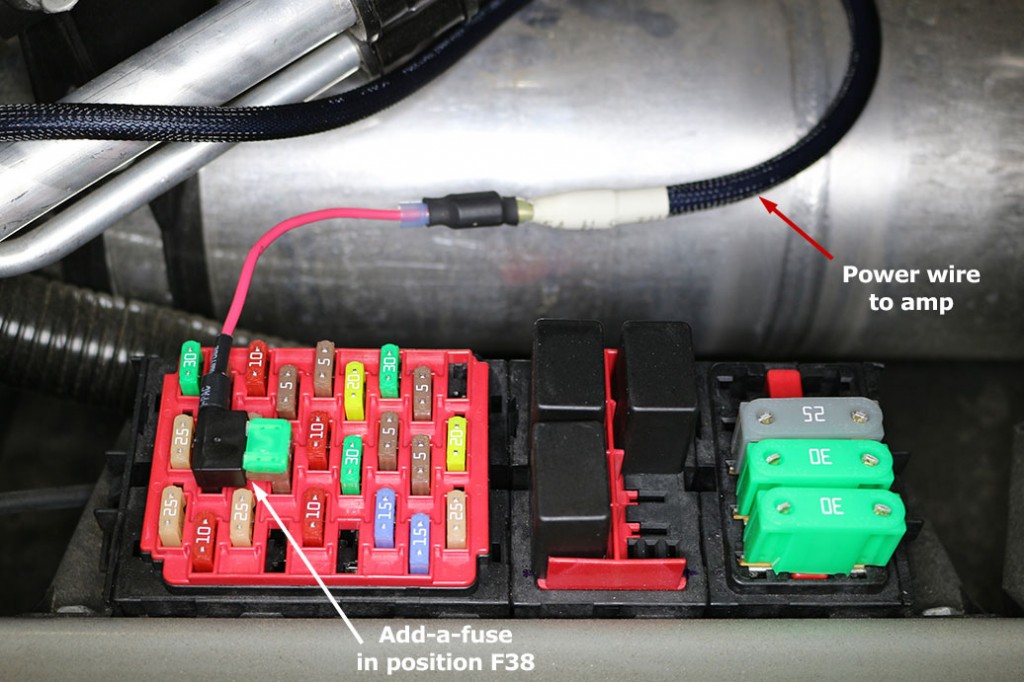
44 comments
Hi there, does anyone have the part number for the Arrow connector?
Thx much in advance.
It was listed on the first page: TE 1534046-1. It looks like Arrow no longer stocks it, but Digikey does (and others). Here’s a link to Digikey: https://www.digikey.com/en/products/detail/te-connectivity-amp-connectors/1534046-1/2187761
Hi guys I’m considering adding an aftermarket amplifier to a future model s. I like that this project does not tap into the battery and instead the fuse box. I have read mixed articles where some people have future issues with the battery and/or DC-DC converter when doing so. Does anyone know if the fuse box is connected to the DC-DC converter? And has anyone had any issues long term by adding accessories to the fuse panel?
The fuse box is connected to both the battery and DC-DC inverter. It’s best to go through the fuse box. Be aware you can’t pull massive amounts of power. Ideally, 15 amps should be your goal, but 30 amps seems doable. I’d not go beyond that – which limits your amp choices. Go with Class-D amp, as these are the most power-efficient. I’ve had zero issues with the 300W amp I installed with this project. This was in a 2013 S, back when the DC-DC inverter was not as well-protected as newer models.
I was thinking of adding a 40 amp mini fuse, as that is the maximum available for a mini fuse. Is that not recommended? Additionally, I was considering adding a solid state relay and transistor to the wire coming from the fuse box as amplifiers like to pull alot of amperage when turned on to charge capacitors. I’m guessing the fuse tap is switched off when car is idle and therefore amplifier caps would get discharged.
Here is an article showing model 3 owners with this project with the DC-DC converter as well as the relay and resistor diagram to prevent amplifier caps from pulling too much amperage at startup.
https://www.travisllado.com/2019/05/tesla-model-3-stereo-part-9-summary-and.html?m=1
I would wire a Lc2i low output converter to the accessory wire shown here
https://teslamotorsclub.com/tmc/threads/spare-switched-12v-circuit-on-model-s-built-after-july-2014.47698/#post-1017005
And then once audio is fed to Line out converter, the remote turn on coming from Lc2i would trigger the solid state to close and bypass the resistor.
I like the resistor/relay approach, especially the more power you may draw. As for current – Tesla only states you can draw 12 amps from the accessory connection, which is fused for 15 amps. Beyond that, there are no recommendations or statements from Tesla – so you’re sort of on your own the more you pull. I felt comfortable with a 30 amp fuse, as I didn’t have the UHFS premium amplifier, which is on its own 15 amp circuit. The more you pull, the higher the risk of getting into trouble. I know of one owner who used an amplifier with an 80 amp rating. His DC-DC converter died, and Tesla would not replace it for free under warranty. Did the amp cause the converter to die? No one knows, but it can clearly add to the stress. Amplifiers are not steady-state loads, but often have extreme peaks depending on the music and levels set. It’s easy to see a very short peak being 2-3 times the amplifier’s ratings – short enough in duration that the fuse wouldn’t blow, and it would have no harm to the battery, but it might take out the converter. So is 40 amps too much? Really hard to say. I suspect it’s probably ok, but the risks go up the higher the amplifier’s amperage.
Yes, tapping directly to the accessory post with a limit of 15 amls is definitely out of the question. However going through the fuse box is okay to go with 40 amps isn’t it? As far as the car knows, this added amperage would be coming from the fusebox treat it as any other accessory and the DC-DC inverter would supply the added current with no issues?
It’s not the limit of a fuse, but the unknown limits of the Tesla electrical system – and how peak currents might take out the expensive DC-DC converter. As I said, 40 amps may be ok, but there is no guidance from Tesla beyond the 15 amp accessory circuit.
Also another possible method I though of would be having two amps and two fuse taps in the fusebox in order to have two 20 amp distributions. That way neither fuse taps strain put much added strain where they are tapping into.
See other replies. To me, two 20 amp fuses vs a single 40 amp are really the same as far as the rest of the Tesla electrical system.
The only information I have about teslas electrical system is that the DC-DC inverter has a label on the side of the component where it states it is rated for 2500 watts The guy who installed the 80 amp average load could see higher peaks than this and could potentially have caused the DC-DC system to be strained. Especially since it’s robbing more than half of the rated power the DC-DC inverter is capable of. The accessories installed in the car and the amplifier could have maxed out the DC-DC inverter.
Yep, that 2500 watt limit is the maximum. When you have all the car loads running at the same time, I don’t know how much is left for add-ins. That’s the risk when you add to that. I can’t say if you’ll be fine or not – only Tesla can do that, and so far they are unwilling to state how much more than the 15 amp accessory circuit you can safely pull if any.
Thanks for your input, you are absolutely right. I think I’ll play it safe and only do a 30 amp fuse rated amplifier. May I ask what amplifier you used and how long you have had this installed? Any issues?
I had it in my first Tesla, an S 2013. I had it for 4 years and no problems. I talked to the person who bought it about 2 years later and still no problems. I used an NVX 300W mono amp for the Subwoofer. Another thought is going with an amplifier that requires 40 amps and fuse it for 30 amps. Unless you plan to listen at ear-splitting levels, my guess you’ll never blow the fuse.
Sorry I saw the model number in one of the pictures. It is a nvx mvpa1. I guess my only question is how long you have had this setup? And any issues or error messages along the way? 12v battery degradation since I believe the amp will have a slight draw when the car is off? I was deciding on going with a 5 channel amp. I see you went with a 300 watt sub amp for just adding a sub. I’m wondering if I should scrap the 5 channel idea and instead upgrade all door speakers and just add a sub like you did.
I used an existing switched circuit, so there was no power draw at all when the car is off. I think most amps take very little power when not used, but check the specs. Zero error messages either (I think the Model 3/Y is more sensitive to loads). I was very happy with the results, as a car lacking any sub is not nearly as nice as a strong subwoofer. It depends a lot on your music tastes and listening levels. I don’t push the sub hard either but like a fairly neutral sound close to the original. The stock amp always had plenty of power for the mid/high range for me. Note that I have another project to swap out the rear door speakers. The Tesla speakers were only woofers that lack highs. Switching to coaxial speakers helped better fill the cabin.
So that fuse tap in your instructions is switched? I think I’ll add the resistor and relay just for an extra safety then. I’ll switch out the rear speakers to coaxial and add a woofer as you did. Great I think im confident enough I finally attempt this project!
Yep. It’s been a while, but I think the fuse was for the UHFS amp, that my car didn’t have. Perfect reuse of that fuse spot.
I have done some research and I think this amp would be perfect for replacing the existing speakers as well as adding the missing 4 mid range speakers. It has a 40 amp fuse rating but I can add a 30 amp fuse to it. I don’t have any information about accessing the missing dashboard and rear hatch speakers and I hope they can be accessed without much trouble. I can bridge the left midrange, bridge right midrange, bridge left midwoofers, bridge right midwoofers to create 4 channels. The only hiccup would be how to restore power to the tweeters as they are passive and not powered by anything.
https://www.sonicelectronix.com/item_128275_Hifonics-TPS-A600.5.html
I don’t have a model s now but I will have one in the near future. So current owners helping me with the obstacles they currently are aware of is greatly appreciated.
Would option C for wiring speaker and 12v power work for a standard audio model x?
Unlikely. That was for an older Model S. Sorry I don’t have the attachment points for the Model X, although they are likely in the same area.
Just finished the install, your instructions were perfect! Only issue I ran into is that when listening at a high volume (anything above 9) I get some distortion from the tweeters? I’ve tried adjusting the highs-mids-lows using the eq but nothing seems to make it fully go away. Any idea what may be causing the ruffling noise I’m getting at some times?
What is your source material? For example, try a clean FLAC file on a USB stick. If the problem goes away, it’s likely the poor source quality. Some sources are much worse than others (i.e. AM, XM and Bluetooth are on the low end of quality).
I have unfortunately. It doesn’t happen when there is no bass signal (adjusted through the knob I added) or at low volume levels, only above 9 volume and with the bass knob turned higher. I’m guessing the stock tweeters don’t have don’t have enough power or are getting overloaded with too much signal when the sub is turned up. I’m going to try replacing the tweeters altogether tonight and see what happens. I will update with what I find out
It sounds more like the bass amp is drawing so much power it’s affecting the car’s voltage? What size amp are you using? I wouldn’t expect a problem with a 300W sub, but something 1200W or larger might be an issue depending where you tap in for power. Next reason might be where you tap in to get the signal. Are you taping the bass signal from these tweeters? If so, you might be better off tapping into the mid-woofers in the doors.
So after much trial and error, I found the problem. I’m using the same amp you did, and using a 300 watt Kicker Comp-C 10″ sub. I tried disconnecting the right side audio from inputting into the amp, and now it works perfect with no distortion even at the highest volume. I guess for bass it’s not all too important to have left and right audio anyway since I would think it would be coming from both sides either way. I can confirm that the remote control knob idea I had works perfectly. When I was originally installing I had to put the add-a-fuse into one of the bottom right fuse slots (I think the one that controls 12 volt accessory power), I have no idea how you got it to fit in the spot you did. At any rate these instructions were clutch and I appreciate the time and effort you’ve put into helping with this project!
Glad you solved it! Generally music puts the low-bass to both channels, since it’s hard to perceive where low bass comes from. Using one channel should work fine. Also good to hear you’re using the 300W amp. It’s well within the range suitable for the car and still really pumps out the sound!
Ran into a (hopefully) slight issue. My car has the sunroof and firewall with the rubber grommet that you put the power lead through has a hose connected to it. What’s the next best way of getting through the firewall?
You might try to go along side of the sunroof hose through the grommet, but I’m not sure if there is enough room for it. On a prior car, I routed wires along the outside of the A pillar. Yes, sounds a bit crazy, but there is a seam at the base of the pillar when you can run a wire and then route it around the door rubber seal. Full instructions are here: https://teslatap.com/modifications/parking-assist-installation/ for a different project. Sorry I don’t have any better suggestions.
With the add-a-fuse I read that the bottom fuse amps always have to be higher than the top in order to still provide protection, is that true? Would you run into any issues putting a 30a on top and the 5a on bottom?
There is no importance to the amperage of the upper and lower slot of the add-a-fuse. When you pick a slot to insert the add-a-fuse, you must remove the fuse from the the car (5 amps for our case) and insert it into the lower slot of the add-a-fuse. The upper slot of the add-a-fuse can be anything from 1 to 30 amps, depending on what you plan to attach. The upper slot is not going through the lower fuse – so the two are independent of each other.
Note that the position of the add-a-fuse is important. If you turn it 180 degrees from what I show, then the upper fuse current will flow through the lower fuse and no matter what fuse is in the upper slot, the lower fuse will be the maximum current.
Gotcha. One other question: as far as adding a remote control knob for bass with this amp, would it be possible to use a speaker wire-to-rca adapter to connect to a remote controller from the left/right speaker tap in point? Then lead normal rca inputs to the amp? Hopefully that makes sense. But it seems like it should work
Possibly. Can’t say I’ve tried it myself, but it seems possible with the right low-ohm potentiometer. This would not convert the speaker levels to line levels, you still need to use the speaker level inputs on the amp.
Thanks for the answers. I’ll give it a try and update on how well it works (if at all). Have you noticed any effect on the battery while using the sub? Any minor/major loss of range?
Zero change to range. The actual power used is minimal.
Where specifically is the grey/grey-black wire for the right door speaker? My early 2015 vehicle has the same empty plug.
You should be able to follow the wires from the door wire bundle that enters into left side of the driver’s footwell. There are a lot of wires in this area. The wires go to a 4-pin light-grey connector. You may also see a Tan and Tan/Black wires on the other side of this connector, which come from the MCU amplifier. Note that Tesla has changed the wires/connectors over the years, but I think this is valid through late 2014 and perhaps through to just before the 2016 refresh.
Does anyone have a specific part number or other definitive identifying information for the clamped connector pictured above? As stated; ” you can buy a mating connector from Arrow” but I’ve had no luck. I’ve contacted Arrow and Digikey and neither can identify the part from my description or pictures sent. I would really like to employ this unused harness in my car to make amp installation completely removable with no traces left behind. A big up-front Thanks to any and all who offer help.
Sam
’13 P85+
Part 1 has the link and exact part number (TE 1534046-1) to order in the parts list. Before you go buy this, confirm your car has the connector. Only a small number of cars in the 2012-2013 time period had the connector when UHFS was not ordered. Later cars didn’t include the wiring or the connector for basic sound (i.e. they made two different wiring harnesses).
The tesla S that I have, which is after the new sensors (late sept 2014 delivery), with basic sound, does not have the grey plug attached to anything. Any ideas how to find the right front spreaker wires? I may have to pull the door panel. Hints on how to do that?
I found the left front wires as you described, but my sub woofer needs both right and left inputs. The left signal is not enough.
I expect Tesla no longer has the large gray connector (to save costs), as it wasn’t used for anything – just a leftover from the ultra sound system. There may be a smaller gray connector with the speaker wires, but perhaps moved with the newest cars. In Part 3, check 4c for pictures of the left and right sides where you can tap into the speaker wires (if still in the same locations). The door panel is not hard to remove, but has a few tricks. I document it for the Projector Logo Lights project in detail. I expect you’ll find the left side wires are white and white/black (an industry standard). These should be routed to a gray connector without a lot of additional wires (it will likely have both the rear and front door speaker wires). Let us know what you find out.
you were correct that the left speaker wires are white/white-black.
the right speaker was grey/grey-black on my car.
to tap into the wires, I used one of the aluminum molex plug pins and squashed it a bit, then I pushed it into the back of the Tesla connector – so I didn’t have to cut or tap directly into the Tesla wires.
using a Sound Ordinance woofer with power from the auxiliary port, I have plenty of bass now. it directly took the high input from the speakers. also came with a volume control that is nice to adjust the bass for different kinds of music.
In @TeslaTap.com writeup there is picture of position F38 fuse (5A) utilized for the add-a-fuse. Is that position ON all the time? or switched? If it is not, does anyone know which one might be utilized instead to be ON all the time?
Thanks,
–Norman
F38 is always on. It would work for a dashcam too.